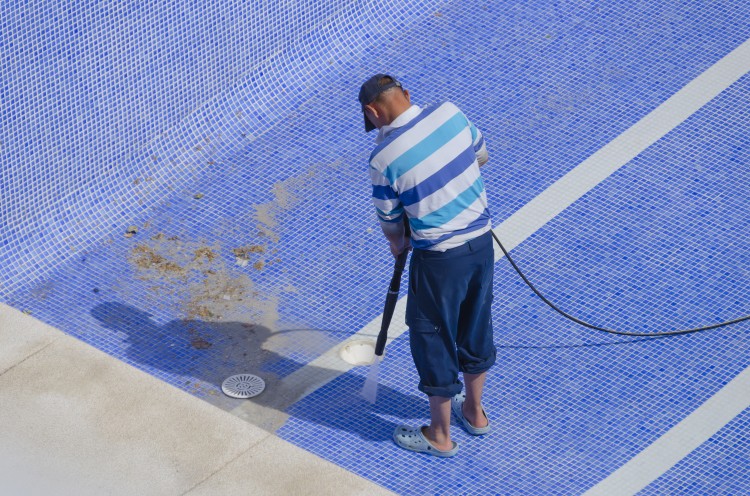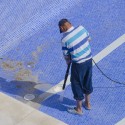The days are already getting a little longer, and spring is just right around the corner. On top of all the other spring cleaning chores you will have to start doing, getting your pool ready for summer fun will be right up there at the top of the list. While most people are cautious about opening up their pool too early in the season, the fact of the matter is that opening and prepping your pool for the upcoming season earlier will save you more in maintenance hassles and expenses during the season. Follow these seven steps to make opening your pool a little less stressful and a little more rewarding this summer season.

Step 1: Clean the Cover
“The first thing you want to do when opening your pool for the season is to clean and remove the cover.” Says Marc Holt, marketing spokesperson for Sunday’s Off Pools. Be sure to clear away any debris like leaves and twigs that might have fallen on top during the winter months, and, if you have a solid cover, drain any excess water off the cover with a submersible pump or hose. You will then want to ensure your cover totally dries before storing it for the season, as this can lead to a mold or bacteria-filled mess you will have to deal with when it comes time to close it up.
Step 2: Raise the Water and Check the Plumbing
Before your pumps and drains can begin properly functioning, the water level will need to be at least midway up the skimmer. Use your home garden hose to refill the pool, or add more water so that the water level is back where it should be. While the water level is replenishing, take this opportunity to replace the plumbing equipment like filters and drain plugs. Once everything is properly connected you will be able to easily check for leaks in the plumbing. Just make sure that the breakers are off while you replace the plumbing equipment.
Step 3: Prime the Pump
When the water level is back to normal and you have replaced all of the necessary drain plugs, filters, skimmers, and other such equipment, it is time to prime your pump. Before you go forward with this step, however, be sure you have removed all of the winterizing plugs from the returns and skimmers, as this will definitely have a negative impace on your system.
Step 4: Note Leaks and Needed Repairs
Once you have properly reinstalled the pump and other related plumbing equipment, it’s time to check for any leaks in your system. If you find any leaks, mark them and be sure to turn the pump off so that repairs can be made. Otherwise, if your system seems to be running fine and no leaks are present, allow it to run for 24-hours to properly filter and recycle the water.
Step 5: Vacuum the Pool
If the water in the pool is clear enough to see the bottom, you can use your pool vacuum to start clearing the bottom of submerged debris like leaves, dirt, twigs, and dead bugs. The best way to vacuum the pool is by using your filter system. To do this, connect the vacuum hose and switch your valve to waste (unless you have a cartridge system). This will force any debris you pick up with the vacuum to bypass the filter system, causing any unwanted materials to be flushed out through the waste pump. The water level will drop when you do this, so be sure to keep the hose running while you vacuum the pool to replenish lost water.
Step 6: Test the Water
Testing the water doesn’t mean just jumping in to check the temperature. Once all the debris has been removed, and the pumps and filters are still running, take a sample of the water from the deep end, at least a foot below the water level. Next, use the proper testing equipment to check the pH and chlorine levels in the water. Ideally you will want to check the water chemical levels everyday, as having unbalanced chemical levels can cause problems, not only to your system, but also to your body if you are exposed to too much chlorine.
Step 7: Ongoing Water Maintenance
When you have tested the water in your pool and are certain your pumps and filters are working properly, it’s time to set your system timer. The pump system should already be running for 24-hours a day during preparation. Once all of the chemicals are balanced and the water is clean, set your system should to circulate the water at least 6-12 hours each day, depending on the size of your pool. If you ever end up with green or unclean water, let the system run for a 24-hour period and adjust the chemical levels as needed.
Step 8: Enjoy!
No explanation needed! Barbeques, hot summer afternoons, and the 4th of July are all just around the corner, so get your pool ready for fun summer memories today! Also, don’t forget to make sure your HVAC is working properly for those hot summer days.

